Welding of water pipes: the right choice of electrodes and
For many decades, welding of water pipes by electric welding has been the most sought-after and effective way of joining the structural elements of a pipeline. Today, this technology is literally perfected, and with proper experience and effective equipment, it is possible to achieve excellent weld quality and, as a result, a high level of joint tightness.
At the moment, a large range of welding equipment and related devices is on sale. What to choose from this range to achieve the highest quality welding performance?

Common types of welding today
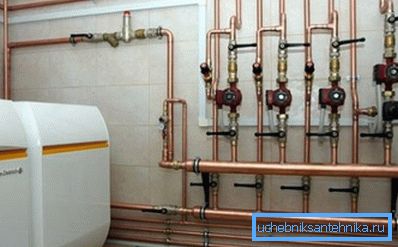
If you don’t know how to repair a crack in the water pipe, use Cold-Welded two-component compositions. But, if it is necessary to connect metal parts to each other qualitatively and reliably, traditional welding will be required.
Consider what methods of welding are relevant today.
In accordance with the type of connection of metal surfaces the following types of welding differ:
- thermal method - based on the melting of the edges of the attached metal surfaces;
- thermomechanical method - It is based on the use of butt contact welding and on the use of a magnetically controlled arc.
- mechanical method - It is based on the attachment of metal surfaces by friction and explosion.
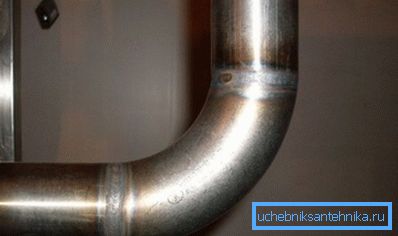
Industrial installation of pipelines, as a rule, is carried out using automatic and semi-automatic welding, since these technologies ensure optimum quality and accuracy of the seam. If the question is how to eliminate a leak in a water pipe at home, then equipment is often used for manual arc welding.
Choosing electrodes
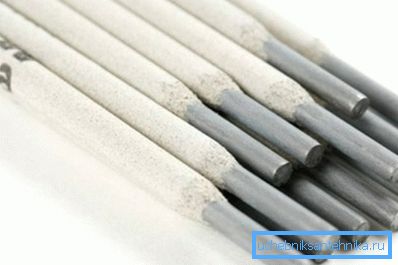
Manual arc welding works using electrodes. The electrode is a consumable material such as electrical tape for water pipes. Therefore, if the plumbing pipe is cracked and repairs are needed, you will need to stock up with a sufficient amount of these consumables.
Electrodes presented on the market today, according to the principle of action can be divided into the following categories:
- Electrodes with the melting basis - are made from a melting wire of a certain thickness. The price of the consumable and the diameter of the cross section of the seam depend on the thickness of the accessory. This type of consumables is melted, resulting in a seam that joins metal surfaces. This type is characterized by the intensity of expenditure, and therefore, when carrying out welding work, it is necessary to have an adequate supply of electrodes.
- Non-consumable electrodes are made of heat-resistant alloys of tungsten, electrical coal and graphite. Such modifications are not so much fused themselves, how many sections of the pipes being joined are melted.
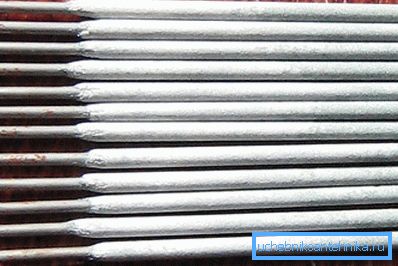
In accordance with the type of coating, the electrodes are divided into:
- Modifications with cellulose coating (denoted by the letter C) are used when connecting pipes of medium and large diameter.
- Modifications with a rutile-acid coating (denoted by the letters RA) are applied when applying neat and high-strength seams. Scale and slag on the finished seam can be quickly removed manually.
- Modifications with a rutile coating (denoted by the letters R and RR) provide easy re-ignition, contribute to the accuracy of the seam with good slag removability.
- Modifications coated with rutile cellulose (denoted by the letters RC) can be used to perform any seams, regardless of their configuration and location.
- Electrodes with the letter “B” in the marking are used for applying joints with a high degree of viscosity and minimal tendency to cracking. Such accessories have been used when working with large diameter pipes.
Cooking metal surface
Before plugging a leak in a water pipe or simply welding one pipe to another, metal surfaces must be properly prepared.
The instruction for preparing pipes is as follows:
- We check pipes for compliance with the diameters of the cross section and wall thickness. In addition, we inspect the ends for the presence of bruises and other defects. Finally, you need to make sure that the pipe cut is perfectly round, not ellipsoidal.
- The areas of the joints are thoroughly cleaned of rust and dirt.
- Next, we check that the ends of the pipes are located at the right angle with respect to each other.
Important: To obtain a high-quality weld, it is necessary that the angle of opening of the edges is 60 degrees with a blunting value of about 2 mm.
- If the shape of the bevel of the edge does not meet the requirements, the ends are additionally processed by face-pickers, flat-cutters or grinders.
- The preparation of the ends on large-diameter pipes is performed using milling machines or by heat treatment using gas-acid or air-plasma cutting.
Cook the pipe turning method
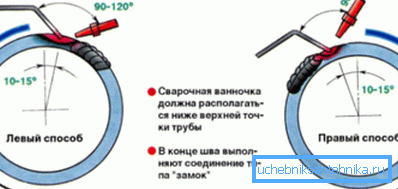
Rotary soldering of water pipes is ubiquitous due to its ease of implementation.
Instruction to perform welding work is as follows:
- First set the tack. Tacks are performed using the same electrode that will be applied to the main seam. On medium-sized pipes, tacks are dotted at a distance of about 5 cm between points.
- Next, the joint is visually divided into four parts.
- First, we weld the first and second parts of the joint.
- Then the pipe can be flipped around its axis to gain access to the unconnected parts of the joint.
- Weld the remaining parts of the joint.
Important: Turning the pipe around its axis is desirable when the metal cools down, otherwise a microcrack may appear at the junction and a sealant for the water pipes will be required.
- After the first seam is made around the joint, its quality and uniformity is examined. If the quality of the seam is unsatisfactory, you can turn the pipe in the opposite direction to put another layer of the seam.
Conclusion
So, we figured out what is needed to do the welding yourself, and what methods are used to carry them out. Are there any questions that need clarification? You will find more useful information by watching the video in this article.